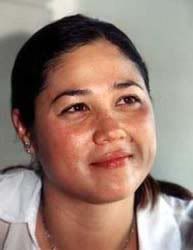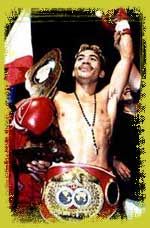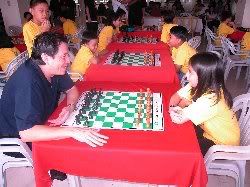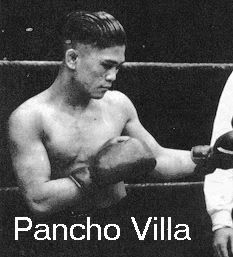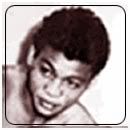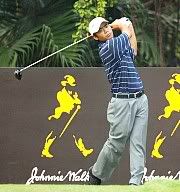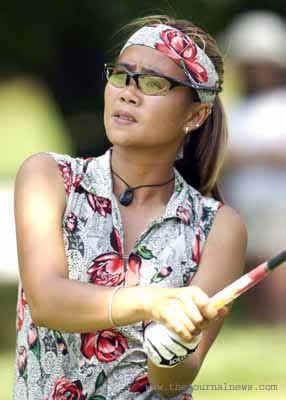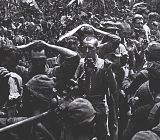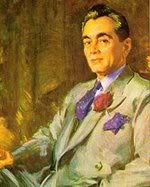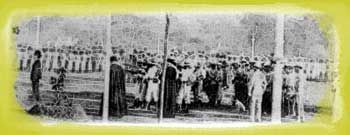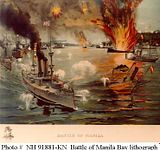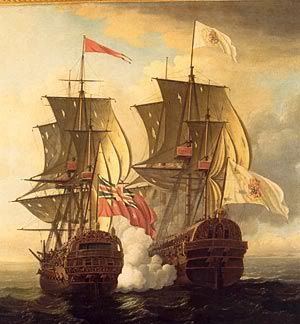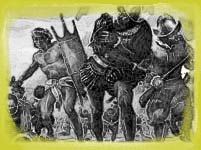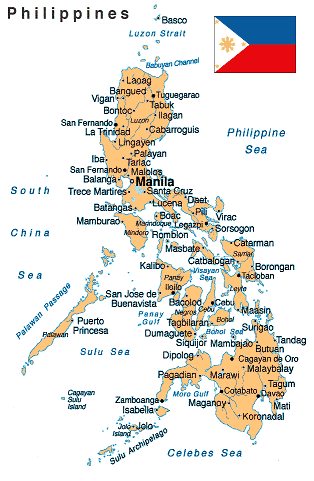
ILOCOS NORTE AND ILOCOS SUR
Ilocos Norte - The Best Of Culture And Nature
Geography
Ilocos Norte has a land area of 3,399.34 square kilometers consisting of alluvial plains, hills, mountains, coastal and miscellaneous land types. Its terrain is generally mountainous and rocky. Its coastline is dotted with coves and rivers most prominent are Bonga, Labugaon, Bacarra and Laoag. It further cuts into the coastal configurations of Bangui and Pasaleng Bay.
Ilocos Norte is bounded on the south by Ilocos Sur, on the east by Cagayan and Kalinga, on the southeast by Abra, and on the west by the China Sea.
Political Subdivisions
Ilocos Norte has 22 municipalities namely: Adams, Badoc, Bacarra, Bangui, Batac, Burgos, Carasi, Currimao, Dingras, Dumalneg, Espiritu, Marcos, Nueva Era, Pagudpud, Paoay, Pasuquin, Piddig, Pinili, San Nicolas, Sarrat, Solsona and Vintar. Laoag converted into a city on June 19, 1965 under R.A. 4584, remains as capital. The municipalities and Laoag City are further subdivided into 550 barangays and 2 districts.
Climate
The province experiences dry season from November to April and wet season from May to October. Annual rainfall is 2,067.2 mm. while average temperature is 27.8oC. The province is occasionally visited by tropical cyclones and storms during the southwest monsoon season.
Population
Population of the province in 2000 was 514,241. The record shows a 1.37% growth rate from the records in 1995. Laoag City had a population of 94,466.
Language / Dialect
Ilocano (Iloko) is the major dialect. English and Filipino are the tools of instruction in schools.
Major Industries
Agriculture is the main livelihood of the people. Garlic is the principal cash crop. Fishing and manufacturing are other industries. Cottage industries include weaving, pottery, blacksmithing and furniture-making.
Ilocos Sur - Heritage Village Of The Philippines
Description
The province of Ilocos Sur is where the Ilocos Region’s myriad of cultures and histories converge to become a living museum of a spirited past. A national shrine, a national landmark, a national museum, heritage museums, ancestral houses, period houses, cobble-stoned streets – they all share space in the timeless land of Ilocos Sur.
Found in the province is the historic town of Vigan, which was inscribed in UNESCO’s World Heritage List in November 1999. Established in the 16th century, Vigan is the best preserved example of a planned Spanish colonial town in Asia. Its architecture reflects the coming together of cultural elements from elsewhere in the Philippines and from China with those from Europe to create a unique culture and townscape without parallel anywhere in East and Southeast Asia. Its Kamestizoan District is replete with ancestral houses with ancient tiled roofs, massive hardwood floorings, ballustrades and azoteas in varying Spanish-Mexican-Chinese architectural styles.
Centuries-old Sta. Maria Church, declared a National Landmark, was used as a fortress during the Philippine Revolution of 1896. Tirad Pass, declared a National Shrine, had been the last stand of the Filipino Revolutionary Forces under General Emilio Aguinaldo during the same period. Bessang Pass served as the backdoor to General Yamashita’s last ditch defense during the last stage of World War II.
Geography
Ilocos Sur is located along the western coast of Northern Luzon. It is bounded by Ilocos Norte on the north, Abra on the northeast, Mt. Province on the east, Benguet on the southeast, La Union on the south, and the China Sea on the west. Its area of 2,579.58 square kilometers occupies about 20.11 % of the total land area of Region 1.
The topography of Ilocos Sur is undulating to rolling with elevations ranging from 10 to 1,700 meters above sea level.
Political Subdivisions
Ilocos Sur has 34 municipalities which are subdivided into 764 barangays. They are Alilem, Banayoyo, Bantay, Burgos, Cabugao, Candon, Caoayan, Cervantes, Galimuyod, Gregorio del Pilar, Lidlidda, Magsingal, Nagbukel, Narvacan, Quirino, Salcedo, San Emilio, San Esteban, San Ildefonso, San Juan, San Vicente, Santa, Santiago, Sta. Catalina, Sta. Cruz, Sta. Lucia, Sta. Maria, Sto. Domingo, Sigay, Sinait, Sugpon, Suyo, Tagudin, and Vigan.
Climate
The climate is generally dry as defined by the Hernandez type of climate. Classification is characterized by more dry months usually from October to May. However, the southernmost portion (part of Cervantes) is observed to be humid and rain is evenly distributed throughout the year while the eastern part of Sugpon is dry with rain not sufficiently distributed. August has the most rainfall while January and February have the least. The mean temperature in the province is 27 degrees C. January is the coldest.
Population
In the 2000 census, the population of Ilocos Sur was 594,206. Vigan City, the capital of Ilocos Sur, has a population of 45,143. The population in the province for year 2000 increased by 1.85% relative to the 1995 census.
Language / Dialect
Filipino and English are the basic tools of instruction in schools while Ilocano is the principal dialect. Kankanaey and Itneg are spoken in cultural communities.
Major Industries
The people are engaged in farming, producing food crops, mostly rice, corn, vegetable, rootcrops, and fruits. Non-food crops include tobacco, cotton, and tigergrass. Cottage industries include loomweaving, furniture making, jewelry making, ceramics, blacksmithing, and food processing.






















